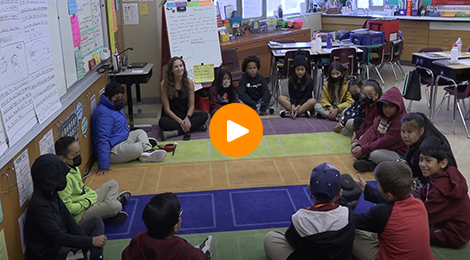As a result of the COVID-19 pandemic, we are all facing challenges in our personal and professional lives, the likes of which have never been seen. For our English learners, the fastest growing subgroup of students in the US, we are seeing the special challenges these students and their families face every day now magnified with schools being closed. At Confianza, our focus is providing access and opportunity to multilingual learners with our client schools and districts to respond in real time to the challenges of keeping teaching and learning going in some way, shape, or form. As the Founder and Director of Confianza, I’d like to share what we’re learning about what professional learning leaders can do during this crisis to address issues of equity for our ELs — Comfort, Communicate, and Connect.
Comfort
First and foremost, leaders should focus on comforting students and families by addressing basic needs. You may have heard the saying that we can’t focus on Blooms until we get Maslow under control. That means we need to learn about and, to the best of our ability, tackle survival issues for our students and our families now. One leader told me this week, “not everyone in my district understands what my EL families are really going through” because, for many, jobs have been lost, undocumented statuses drive fear, and overall, there are so many unknowns. Furthermore, the digital divide is one major area of equity we are seeing more glaringly than ever. “If the expectation is to have children on computers, provide computers,” a leader stated, “because some households have several families living there and only one phone with no computer.” Plus, platforms can be confusing for families if the school has not used online learning in the past. Given that this time is full of uncertainty around economic security, health and other basic needs, I recommend asking the following questions of your school/district now:
- Are students and families safe and healthy? How can educators check in to see if students and families have their basic needs met?
- Do students and families have access to food? Can the school provide breakfast and lunch for the households?
- What resources can the school and/or community provide now to make sure basic needs are met, including access to wifi and devices?
Communicate
When reaching out to EL families, we need to make sure that what we are communicating to families is accessible to those who do not have proficiency in English. As one leader shared with me, “I don’t think I’ve ever been this passionate about my job before because now we are seeing which educators know how to effectively reach out to multilingual populations and who does not.” For example, by sending home electronic surveys in English asking who has wifi access for remote learning, we may leave out 1) those caregivers who do not have proficient literacy skills in English and/or 2) those who do not have devices at all on which to view and respond to the survey. Therefore, I recommend asking of your educators:
- Is the communication we are sending home to families actually accessible to all families? If not, what ways besides email can we reach out (e.g. phone calls, texting, platforms that translate to home languages)?
- Are EL educators’ expertise being leveraged at this time to support what needs families have, what families need, and what communication strategies can be effective now? What accommodations need to be made for ELs (e.g. modeling of online learning procedures expectations, scaffolds we would provide in the face-to-face classrooms, blended supports comprised of print-outs instead of all online learning)? Are we overemphasizing writing tasks or are we balancing all domains — reading, writing, listening and speaking?
- Can leaders take note of any inconsistencies in accessible, two-way communication for EL families so that a more proactive and inclusive set of policies and practices can be put in place now going forward?
Connect
“No one was prepared for this and suddenly, it’s full steam ahead,” a leader told me this past week, “I really wish we could just take this day by day and see what we need to get through.” Let’s use this as an opportunity to slow down, breathe, and really connect with each other. We can focus on the power of relationships to get us through. Yes, ideally, we can keep teaching and learning going, but let’s not forget how important it is to check in and share how we are each experiencing this “new normal.” Let’s not overemphasize remote learning at the expense of organic connection and alternative ways of learning between all people–students, educators, caregivers, the community. “We’re keeping it simple right now,” disclosed a leader, “we are giving students academic assignments and we are also asking for students’ and caregivers’ ideas about creative projects, down time, and outdoor activities when possible, too.”
Social-emotional support should be woven into academic learning and now is a great time to make that a new reality. Take time to pause, reflect and ask yourself and your stakeholders:
- Are we providing the time and space to process these changes — emotionally and logistically? Or are we pushing ahead with over-programmed schedules and expectations that may be unrealistic at this time?
- How are we hearing from students about their experiences right now? Can teachers check in through phone calls or video chats to be less impersonal than email-only outreach?
- How can schools capitalize on families’ funds of knowledge and not just the “official” curriculum? Can we balance the needs of core instruction with other ways of authentic learning in the home? How can families be partners who we work with to get through this together?
Resources:
Check out Confianza’s facilitated online courses and workshops, coaching sessions, and webinars for are a complete professional learning experience. Consider reallocating funds for on-site PD to online opportunities for teams.






